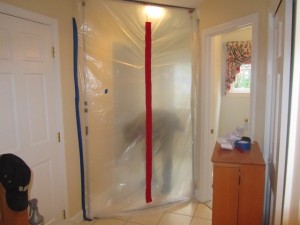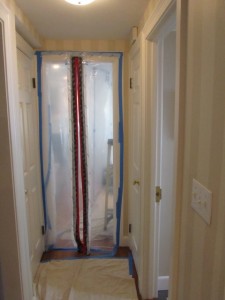Jobsite Dust Control
By Robert Robillard on Dealing With Dust, Interior Repairs, Tool Reviews
A good jobsite dust control strategy is essential to keeping your customer or significant other happy throughout a DIY or remodeling project.
Here’s a few tips to get you started:
1. In the work area, look for ways air to enters and leaves the room. This would include sealing off doors, windows, air vents and any other openings. Take steps to control or block them off.
2. Designate one doorway to be your main entryway to the room. Using thin plastic sheeting to seal off all the other areas you identified in step one except for exterior windows. ZipWall dust barrier system offers a solution for installing easy, quick and super effective dust barrier walls.

Jobsite Dust Control
Zipwall is designed for jobsite dust control and can be used in remodeling, mold remediation, health-care construction, lead paint abatement, hardwood floor sanding, concrete restoration, dry wall sanding and painting preparation.
The best part of this system is how quick and easy it is to set up. No ladders or tape is needed and it causes no damage to finished surfaces.
3. If your not dealing with lead dust, place fans blowing outward in all exterior windows and leave these running throughout the demolition or remodeling to remove as much dust as possible from the room.
4. Repeated use of HEPA filter equipped vacuums. I prefer HEPA because they do not let the very fine dust escape the vacuums exhaust port
and back into the air your breathing. Connection dust making tools to a HEPA vacuum and collecting the dust at its source is another excellent way to control remodeling dust.
5. Wet-wiping of the work area keeps fine dust down.
6. Misting before or during cutting also helps control airborne dust. [e.g., cutting concrete]
7. Try not to carry debris through the house. consider using a debris chute out a window to a dumpster.
8. Wear a high quality dust mask.
9. Clean up the work area daily



